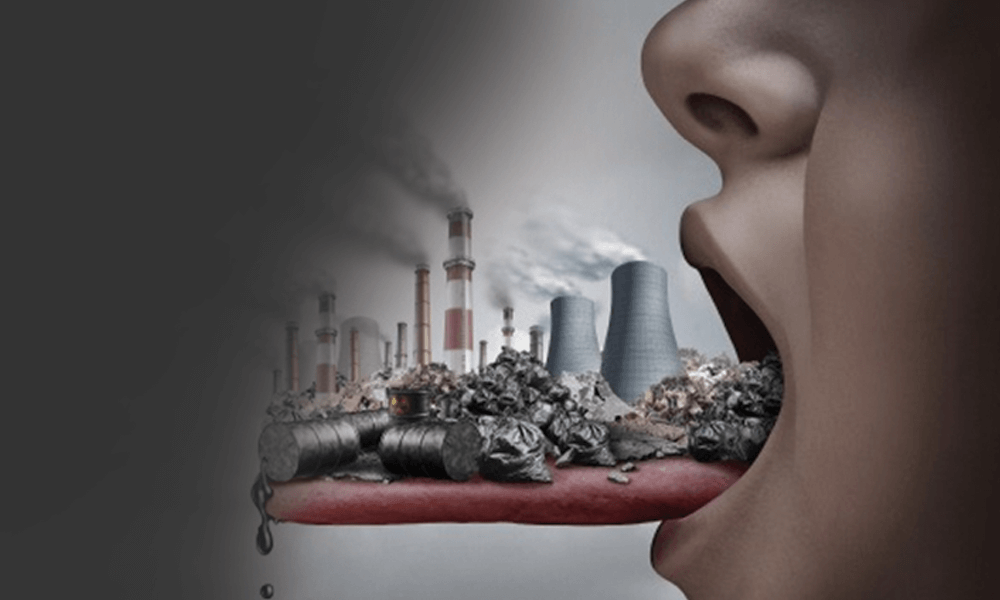In the wake of urbanization and modernization although we are making our lives comfortable, at the same time our health is being affected the most. The air that we breathe is laden with a layer of poisonous pollutants and gases to an extent that it is posing risk to our lungs and is causing serious damage to the respiratory tracts. And the result is a rise in the cases of asthma and progression in respiratory ailments like chronic obstructive pulmonary disease (COPD). Various studies have revealed that the situation of the air we inhale is as bad as smoking some forty cigarettes in a day!
It is exposure to such micro-particles emitted from vehicular emissions, wide – scale industrialization, construction activities, and exhaust coming from cars which is a mixture of combustion gases and ultra fine particles coated with organic compounds that result in obstructive airway diseases like COPD. And, the moment these particles enter our respiratory tracts, these pollutants can activate an inflammatory cascade that results in severe damage to our lungs.
Earlier the problem was prevalent among elderly, smokers or was confined to rural areas where use of Gobar gas and biomass was making things worse as people were exposed to fumes from burning fuel for cooking and heating in poorly ventilated spaces. But now due to various kinds of pollutants, soot and carbon particles in the air which is aided by changing weather, smog, etc., people in the cities are equally affected.
What is COPD?
Know it better
Now that we know the cause of Chronic Obstructive Pulmonary Disease (COPD) which is characterized by narrowing of the airways, it is important to understand how the disease affects our health. In larger airways, the inflammatory response is referred to as chronic bronchitis. At times, it may even lead to the destruction of tissues lining our lung’s passage and cause “emphysema”- a long-term and progressive disease of lungs.
Although smoking accounts for most patients with COPD, exposure to air pollutants play an important role too. Basically, in a patient ailing from COPD, diffusion of carbon dioxide and oxygen in the blood does not take place which is why adequate oxygen does not reach the bloodstream through lungs and thus more amount of carbon dioxide is retained in the body, causing difficulty in breathing.
About 50 percent of COPD cases remain un-diagnosed during the physical examination and the symptoms do not appear until significant lung damage has already occurred which only worsens over time. But a chest x-ray and pulmonary function test can diagnose and reveal the progression of the disease.
For chronic bronchitis, the main symptom is persistent cough along with mucus (sputum) production for at least three months. However, other symptoms may include shortness of breath, wheezing, tightness in the chest, frequent respiratory infections, swelling in ankles, legs, etc.
Treatment
Much of the treatment for COPD includes things that one can do to manage the disease on their own.
However, the medicines prescribed to treat COPD can be for long-term duration as these help to prevent/ relieve symptoms. If you are a patient of COPD, make sure.
You don’t skip or discontinue medicines without consulting your doctor. Also, there is lack of awareness about non-invasive ventilation (NIV) treatment for COPD even though it reduces respiratory distress and risk of death considerably. A patient in moderate or advanced stages of COPD can be treated with an NIV machine, which aids in bringing down the carbon dioxide level in the blood thereby enabling the patients to breathe normally.
Measures to Combat COPD
Because people with COPD or the ones who are susceptible to having respiratory diseases are recommended to stay indoors, it is important they improve their surroundings at home and take necessary precautions listed below:
- Stay Indoors: Stay away from smoke and air pollution. Even though you quit smoking, it’s important to avoid places where others smoke because passive smoking can be equally harmful for the health of your lungs. As a cautionary measure, you can avoid stepping out without wearing a mask.
- Invest in Right Mask: Make sure you buy only N95 mask which can filter about 95 percent pollutants in the air. Surgical and other masks available in the market are ineffective so avoid wasting money on those.
- Keep your Indoors Smoke-Free: As a rule, do not burn mosquito coils and incense sticks at home as the smoke/soot emitted from them can cause further breathing problems.
- Keep Hydrated: It is advisable to consume at least 2 litres or more water in a day.
- Exercise Daily: A little bit of exercise/yoga everyday will improve your respiratory muscles. Avoid strenuous exercises and discuss with your doctor to know which activities are safe for you.
- Have a Healthy Diet: It can help to boost your immunity and strength. Make sure you don’t step out without having meals. Also, have fruits which are rich in antioxidants regularly.
About the author
Dr. Rakesh Chawla is a Sr. Consultant for Respiratory Medicine, Critical Care and Sleep Disorders and Interventional Bronchoscopist with Saroj Super Specialty Hospital, Delhi. He has published approx. 54 papers in national and international Journals.

